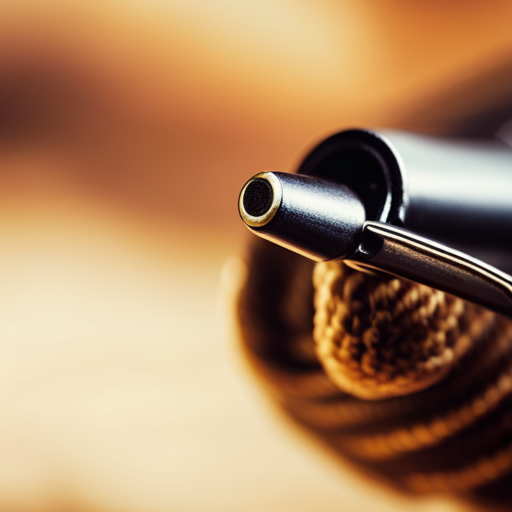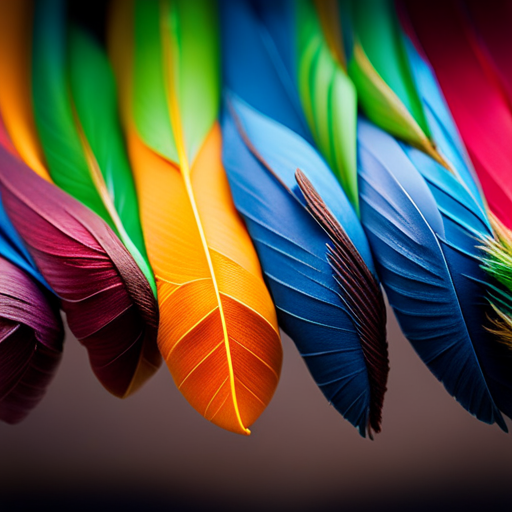Like a skilled tailor crafting a bespoke suit, fly tyers use natural furs to create intricate and lifelike fly patterns.
From the sleek, water-resistant qualities of otter fur to the buoyant and insulating properties of rabbit fur, each type of natural fur brings unique characteristics to fly tying.
In this comprehensive guide, we will explore the art and science of using natural furs in fly tying, from selecting the finest materials to preserving the finished flies for lasting quality.
Understanding Different Types of Natural Furs
The selection of natural furs for fly tying depends on the specific qualities and characteristics of each type. Different fur sources provide an array of textures, colors, and natural oils that make them suitable for various fly patterns. When choosing fur for fly tying, it’s essential to consider the fur qualities and how they align with the desired fly patterns. Some furs are buoyant and water-resistant, making them ideal for dry flies, while others have more translucency and movement, perfect for streamer patterns.
Understanding the fur qualities is crucial in creating flies that mimic natural insects and baitfish effectively. Common fur sources for fly tying include rabbit, deer, elk, and various game birds. These furs offer a range of applications in fly tying, providing options for both imitative and suggestive patterns.
Tying tools such as dubbing brushes, hair stackers, and specialized scissors are essential for working with different fur types, ensuring precision and efficiency in creating well-crafted flies. By comprehending the unique attributes of each fur type and utilizing the appropriate tying tools, fly tyers can elevate their creations and craft flies that exhibit lifelike qualities, enhancing their effectiveness in enticing fish.
Selecting High-Quality Fur for Fly Tying
To ensure optimal results in fly tying, it is imperative to meticulously select high-quality fur that aligns with the specific characteristics required for the intended fly patterns. When choosing fur for fly tying, it is essential to consider the fur characteristics such as texture, length, and color. The texture of the fur affects how it will behave in the water, with some furs providing better movement and lifelike action. The length of the fur is crucial for achieving the desired silhouette and overall appearance of the fly. Additionally, the color of the fur should match the natural prey of the target fish species.
When sourcing fur for fly tying, it is important to consider sustainable and ethical practices. Look for suppliers who prioritize sustainability and ethical treatment of animals. Sustainable sourcing ensures that the fur is obtained in a responsible manner, minimizing environmental impact and supporting animal welfare. By choosing high-quality fur with the right characteristics and from sustainable sources, fly tyers can create effective and environmentally conscious fly patterns.
| Fur Characteristic | Description |
|---|---|
| Texture | Affects fur’s behavior in water |
| Length | Influences the silhouette of the fly |
| Color | Should match the natural prey |
Preparing and Handling Natural Fur Materials
When handling natural fur materials for fly tying, proper preparation is crucial for achieving optimal results. This involves ensuring that the fur is clean and well-maintained, as well as properly stored to maintain its quality over time.
To prepare and handle natural fur materials effectively for fly tying, consider the following key points:
-
Cleaning fur: Before using natural fur in fly tying, it is essential to clean the fur thoroughly. This can be done by gently washing the fur with a mild detergent and warm water. After washing, ensure that the fur is completely dry before use to prevent any mold or mildew growth.
-
Storage options: Proper storage is essential to maintain the quality of natural fur materials. Store fur in a cool, dry place, away from direct sunlight and moisture. Consider using airtight containers or resealable bags to protect the fur from dust and pests.
-
Regular maintenance: Regularly inspect and brush the fur to keep it free from debris and tangles. This will help preserve the natural qualities of the fur and ensure it remains suitable for fly tying applications.
Techniques for Incorporating Fur Into Fly Patterns
Fly tyers frequently employ various techniques to skillfully incorporate natural fur into fly patterns, enhancing the visual appeal and effectiveness of the flies. One essential technique is blending different types of fur to achieve specific color combinations and textures. By blending fur from different animals or even different parts of the same animal, tyers can create unique and natural-looking patterns that mimic the appearance of insects, baitfish, or other prey. This blending process involves carefully mixing fur fibers to achieve the desired color and texture, often using a dubbing loop or blending board to evenly distribute the fur.
Color combinations play a crucial role in fly tying, and fur offers a wide range of natural colors that can be combined to match the appearance of various insects and other aquatic organisms. Fly tyers often use fur from animals such as deer, rabbit, muskrat, and seal to create patterns that accurately represent the colors found in nature. By skillfully incorporating these natural fur colors into fly patterns, tyers can effectively mimic the appearance of specific prey species, increasing the likelihood of attracting fish.
Additionally, techniques such as spinning and stacking fur can create multi-colored and textured bodies that add depth and realism to the flies, making them more enticing to fish.
Tips for Maintaining and Preserving Natural Fur Flies
How can fly tyers ensure the longevity and quality of natural fur flies? Proper maintenance and care are essential for preserving the appeal and functionality of natural fur flies. Here are some tips for maintaining and preserving natural fur flies:
-
Fur Storage and Preservation
- Store natural fur flies in a cool, dry place to prevent moisture damage and mold growth.
- Use breathable containers or pouches to store fur flies, allowing air circulation to prevent mustiness.
- Consider using moth-repelling products or cedar storage to protect fur from pests and insects.
-
Fly Tying Maintenance and Care
- After each use, gently brush the fur flies to remove dirt, debris, and excess moisture, preserving the natural shine and texture.
- Avoid exposing fur flies to direct sunlight for prolonged periods to prevent fading and deterioration.
- Periodically inspect the fur flies for signs of wear or damage, repairing or replacing any worn-out components promptly.
Frequently Asked Questions
Can Natural Furs Be Used to Tie Flies for Saltwater Fishing?
Yes, natural furs can be used for saltwater fly tying. They offer unique properties and are effective for various freshwater applications as well. However, due to conservation efforts, anglers may consider exploring material alternatives for fly tying techniques.
Are There Any Ethical or Environmental Concerns Associated With Using Natural Fur in Fly Tying?
When considering the use of natural fur in fly tying, it’s essential to address ethical sourcing and environmental impact. Ethical sourcing ensures humane treatment of animals, while environmental concerns involve sustainability and conservation of species.
How Can I Dye Natural Fur to Create Custom Colors for My Fly Patterns?
Natural fur dyeing allows for custom color customization in fly pattern construction. Techniques vary depending on fur type and desired outcome. Prior to dyeing, proper material selection is crucial. Experimentation and knowledge of dyeing methods are key.
Is There a Specific Type of Fur That Is Best for Tying Small Dry Flies?
When selecting fur for tying small dry flies, it’s important to consider the texture and buoyancy. Fine, soft furs of animals like deer, elk, or hare, are ideal choices for dry flies due to their water-repellent properties and ability to create lifelike patterns.
Can Natural Fur Be Used to Tie Flies for Targeting Specific Species of Fish, Such as Trout or Bass?
When considering fur selection for fly tying, natural furs offer distinct benefits for targeting specific fish species. Their versatility and lifelike qualities enhance fly tying methods, enabling effective fishing techniques tailored to trout or bass.
Conclusion
In conclusion, the use of natural furs in fly tying requires a deep understanding of the different types of furs, selecting high-quality materials, and proper preparation techniques.
By mastering these skills, fly tyers can create beautiful and effective fly patterns that mimic the appearance and movement of natural prey.
Incorporating natural fur into fly tying adds a sense of authenticity and connection to the natural world, elevating the art and craft of fly fishing.




